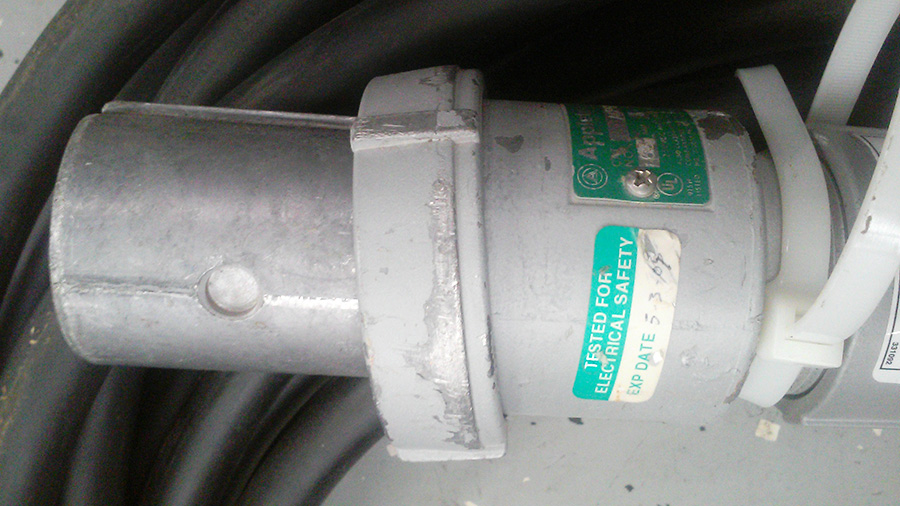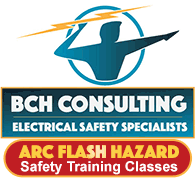The simple AEGC program would’ve prevented this fatality… if it was followed
Back in the mid-90s I was working as a maintenance electrician for a large aluminum forge in the Cleveland, Ohio area. I can remember being briefed about an accident that occurred a few years earlier. A die setter had been electrocuted because an apprentice electrician had wired a 480-volt extension cable incorrectly. He had placed one of the phase conductors on the ground terminal during assembly. This simple mistake ultimately resulted in a tragic accident.
Both NFPA 70e® and OSHA recognize the dangers associated with these extension cables. This is why employers, who use extension cables energized above 120 volts, are required to institute something called an Assured Equipment Grounding Conductor program (AEGC). The program is designed to prevent accidents just like the one I have previously described.
Why is the AEGC program NOT common practice?
As I travel around presenting electrical safety training, I rarely see compliance to this standard. One reason may be that NFPA 70e® only mentions it in a brief statement in article 110.4(C)(2) (see page 19 of the 2015 edition). To get the full description, the employer will have to read the OSHA requirements listed in 1910.304(b)(3)(ii)(C)
Here is a brief overview of the OSHA requirements:
1910.304(b)(3)(ii)(C)(1)
A written description of the program is required to be available to affected employees.
1910.304(b)(3)(ii)(C)(2)
The employer shall designate one or more competent persons to implement the program.
1910.304(b)(3)(ii)(C)(3)
Each cord set shall be visually inspected before each day’s use for external defects.
1910.304(b)(3)(ii)(C)(4)(i)
All equipment grounding conductors shall be tested for continuity and shall be electrically continuous;
1910.304(b)(3)(ii)(C)(4)(ii)
Each receptacle and attachment cap or plug shall be tested for correct attachment of the equipment grounding conductor. The equipment grounding conductor shall be connected to its proper terminal; and
1910.304(b)(3)(ii)(C)(4)(iii)
All required tests shall be performed before first use; before equipment is returned to service following any repairs; before equipment is used after any incident which can be reasonably suspected to have caused damage (for example, when a cord set is run over); and at intervals not to exceed 3 months, except that cord sets and receptacles which are fixed and not exposed to damage shall be tested at intervals not exceeding 6 months;
If you have a question or would like additional information concerning Assured Equipment Grounding Conductor program requirements, drop us a line on our contact page or call Brian Hall at 440-371-7352. OSHA AEGC webpage.

Sign up for our free weekly Safety Tips and receive one weekly, right to your inbox!








Awesome article Brian and if you don’t mind I’d like to add a few other points if I may.
The AEGCP according to OSHA 1910.304(b)(3)(ii)(C) can be used in lieu of GFCI protection for temporary branch circuits “other than 125 volt, single-phase, 15, 20 and 30 Amp receptacles” This means if an employee is using extension cords and/or portable electric equipment at 208, 240 and even 480 volts, then either GFCI protection or the AEGCP must be used.
NFPA 70E, article 110.10(B) and (C) contain essentially the same “GFCI or AEGCP” requirements as OSHA.
While OSHA and 70E doesn’t have the an exception for GFCI protection due to “creating greater hazard” or for equipment “having a design that’s not compatible with GFCI protection”, the NEC article 590.6(A) does.
However one word of caution for anyone attempting to use the “design not compatible with GFCI protection” caveat. Ensure with a 100% certainty the equipment is truly not compatible with GFCI’s because the GFCI just might be performing its job due to minute current leakage. It only takes 4 to 6 mA to trip a class A GFCI, so even the smallest level of leaking current will cause it to trip. And let’s not forget, it only takes about 10 to 40 mA to cause muscles to “lock up” which can lead to ventricular fibrillation.